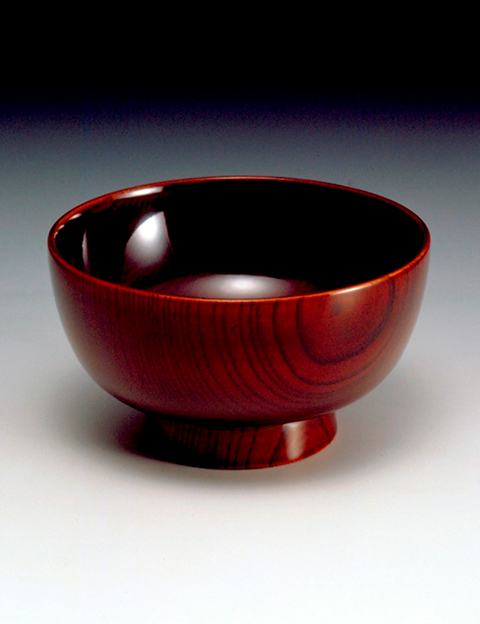NARUKO Shikki (Lacquerware)

At the beginning of the 17th century, the lord who ruled over what is now Naruko dispatched local craftsmen to Kyoto to develop their skills in an attempt to raise the quality and popularity of locally produced goods. By the late 18th century, the area was producing various household items, and the production of lacquerware had become the main source of income for the people of Naruko.
Naruko lacquerware is produced using several techniques. In Kijiro-nuri, a clear lacquer is used to expose the woodgrain. In the fuki-urushi-shiage technique, a natural lacquer is repeatedly rubbed into the wood and the natural coloring of the lacquer is retained. Ryumon-nuri uses a highly distinctive technique to produce a marbling effect. In addition, a more traditional polished lacquer technique is sometimes used to bring out the characteristic beauty of the refined sap. Today, a variety of household items are produced, including trays, coasters, stacking boxes and bowls, all of which fine examples of this time-honored craft.
Feature
The key techniques of Naruko lacquerware include Kijiro-nuri, in which an extremely clear lacquer is used to show off the beauty of the underlying woodgrain, and fuki-urushi-shiage, in which a colored lacquer is repeatedly applied to the wood and then wiped off, leaving only the color of the lacquer on the surface of the wood. A unique decoration technique called Ryumon-nuri produces a pattern reminiscent of spilled ink. Another traditional technique called nuri-tate produces a freshly painted wet appearance in the finished product.
How to make
Naruko lacquerware is produced in four stages: making the wooden base, and then applying the base coat, lacquer and decorations. The wooden base can be a turned piece made using a wood lathe, a box or a piece made of thin, bent boards. The wooden base is prepared using a coating of fine clay, rust, or persimmon tannins. Black lacquer is then applied to the coated wooden base to prepare it for the final stage of lacquering in which a top coat of lacquer is applied with great diligence to ensure that no brush marks are visible and that no dust sticks to the bowl. The finishing coat of lacquer is applied in one of two styles: hana (flower) lacquering, where the lacquer is allowed to dry as-is on the bowl, or Roiro lacquering, where the lacquer is allowed to dry and then polished to a smooth finish. Some lacquered pieces are also decorated with maki-e gold dust images.

